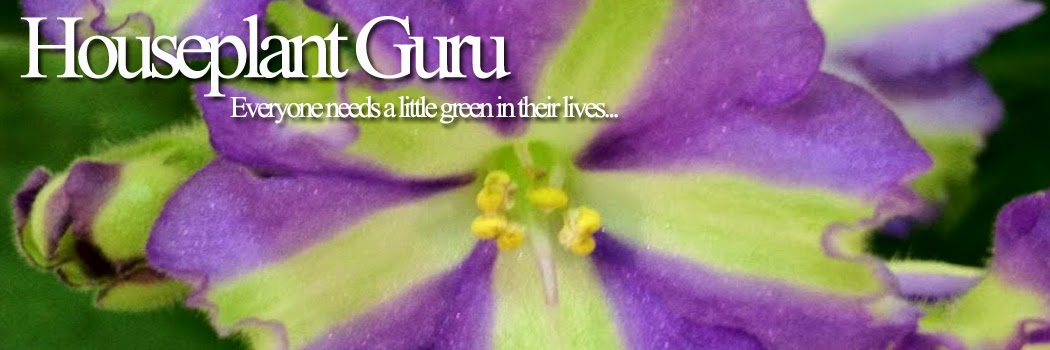 |
Cissus rhombifolia 'Ellen Danica'
|
I love the Cissus family of plants. You probably know the most common of these plants as Grape Ivy. My grandma had this Cissus rhombifolia 'Ellen Danica', also called Oak Leaf Grape Ivy, in her living room for as long as I can remember. She had it in a hanging basket and when I inherited it, I took it out of the basket and put it in a large container on a teuter. It took it a while to turn around as it started out upside down after I took it out of the basket. It grew quickly and covered the trellis, but it was too hot in my greenhouse, and I couldn't keep up with the water. This smaller plant is the result of a cutting from that plant. It is very easy to grow, (if watered on a consistent basis) and its dark green, oak-shaped leaves are very becoming. I have found that this Cissus is the easiest to grow of the ones I have. The best trait of this plant is the ability to grow in less than stellar conditions, including low light situations.
 |
| Cissus striata- miniature grape ivy. |
This Cissus striata, or miniature Grape Ivy, has unfortunately passed away since this picture was taken. It was hanging all the way to the floor on a shelf in the kitchen window. I killed it.....I didn't mean to....... So I would say this isn't the easiest one to grow, but it may just have been the person taking care of it......once again, the consistency of water is important. It is a very cute plant and resembles the outdoor plant known as Parthenocissus quinquefolia, or Virginia creeper. They are related, being in the family Vitaceae, as are grapes.
 |
| Cissus amazonica |
This picture is a little blurry, as you can see, but I really wanted to include this plant. Cissus amazonica, also called the Amazon Jungle Vine, native to Brazil, likes very high humidity. Growing it in an enclosed terrarium, or in a conservatory would be best. It has silver leaves on top with white veins, with a burgundy underside. I made a tube of chicken wire for it to grow on because it has gone so crazy. It came on a small trellis in a 6" pot. It could be doing better, but it is very hot in the summer in my greenhouse, especially this summer. Higher humidity would have been helpful. Even though I have a conservatory, the heat in the summer depletes most of the humidity.
 |
| Cissus discolor |
.JPG) |
| Cissus rambling through a Euphorbia grandicornis. |
.JPG) |
| Rex begonia vine leaves. |
On to my favorite member of the family, Cissus discolor, or Rex Begonia Vine. The common name is very apropos for this plant. The leaves really do resemble those of the beautiful rex begonias. It is one of the most beautiful houseplants, in my opinion. The red stems and tendrils add to the beauty of this plant. The new growth is also a darker burgundy than the older leaves.
The top picture is of my plant at home. The next three pictures are of a plant at my friend's house. She has it growing on the patio in the shade, yet it does get some morning sun. I love how she has let it wind around her Euphorbia grandicoris, or Cow's Horn Euphorbia. Of course, untangling it later might be a problem. Notice how much more colorful the foliage is outside. As long as it isn't in too much sun, it will enjoy being outside for the summer. In this situation it is being used as the "spiller" in a container. This variety is also a high humidity lover, so a spot in a conservatory, kitchen, or bathroom would be best for it.
The bottom pictures were taken in the Lincoln Park Conservatory in Chicago. Notice how high the vine has grown on the pillar in the conservatory.
All these family members are great for hanging baskets or for growing on a trellis. Propagate these beautiful plants and use them for "spillers" in your shady containers next year.
 |
| Cissus discolor in the Lincoln Park Conservatory in Chicago. |
 |
| Notice the red tendrils and burgundy new growth. |
 |
| Leaves up close in my greenhouse. |




.JPG)
.JPG)




.JPG)